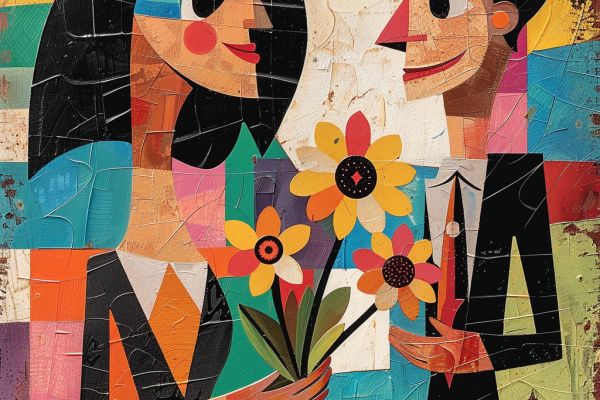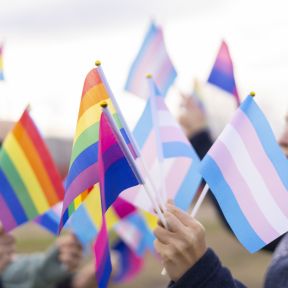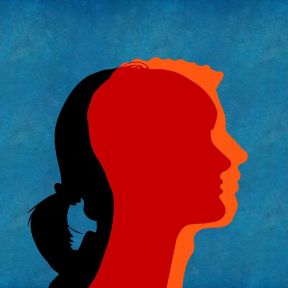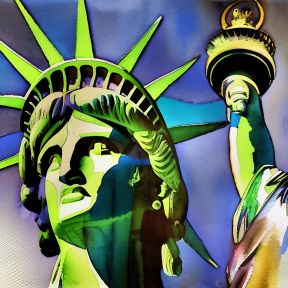All humans are born with biological characteristics of sex, either male, female, or intersex. Gender, however, is a social construct and generally based on the norms, behaviors, and societal roles expected of individuals based primarily on their sex. Gender identity describes a person’s self-perceived gender, which could be male, female, or otherwise. In recent years, expanding the public understanding of gender has freed many to feel more comfortable in their own skin and live as the people they believe themselves to be. People whose gender identity corresponds to their biological sex may be referred to as cisgender. Transgender people have a gender identity that does not conform to the sex they were assigned at birth. And people whose gender identity feels neither masculine nor feminine may identify as non-binary, while those who feel no gender identity may refer to themselves as "agender."

There has likely never been a time in human history when all individuals felt that they were either strictly male or strictly female. But while different cultures at different times have been more or less open and accepting of different gender identities, many more people today may be comfortable expressing their identity and living their lives as members of the gender to which they believe they belong than ever before. Still, according to research by the World Health Organization and others, transgender, nonbinary, and other non-cisgender individuals face widespread discrimination in the workforce, in public life, and in the healthcare system. And in cultures that deny the existence of transgender or non-binary individuals altogether, or deny rights to such people, those who do not identify with the gender binary may be forced to live in secrecy or be threatened with violence.
There is no definitive answer to this question. Along with cis males and cis females are trans men and trans women, transgender, nonbinary, genderfluid, genderqueer, and agender individuals, among many other possible definitions. Facebook offers users dozens of potential gender identities to select for their profiles, while other experts suggest that there may be 100 genders or more and different cultures may use different identifications for one gender or another. The key, advocates suggest, is not pinning down a definitive list of gender possibilities but to be accepting of each individual’s declared gender.
Many people are comfortable as masculine or feminine, also known as the gender binary. When people who do not identify as male or female follow “traditional” masculine or feminine behaviors and routines anyway, because of reluctance or fear of declaring their true gender identity, they could be said to be practicing gender conformity. Despite a generally greater openness to other genders today, the public world is still generally geared toward the gender binary. Ironically, though, many elements of what are now seen as distinctly male or female behaviors were once quite different. For example, not so long ago, men wore wigs and heels and favored the color pink, all now considered stereotypically feminine. Understanding how fluid our binary expectations have actually been over time could lead to greater acceptance of alternative gender roles today.
People can become aware of their gender identity at any time. Some become conscious of their identity in childhood, and may be aware from a young age of not conforming with the gender to which they were assigned at birth. This feeling of discomfort or distress while trying to live within the gender binary is often referred to as gender dysphoria. Such feelings of gender dissonance can develop into depression or even suicidal ideation until one can find gender resonance, often after encountering others with the same gender identity and with whom they can identify. But non-cisgender individuals may still struggle with their identities if their family, their peers, or their community is not supportive of identities along the gender spectrum.
A young person revealing to their parent or parents that they are nonbinary, transgender, or genderqueer may be experiencing significant anxiety, even if they believe their parents could be supportive. Parents who can remain calm during their discussions, focus on listening, trust their child’s instincts, and remember that what’s happening is more about their child’s mental health than about their own can offer tremendous relief and support to their child. Afterward, parents can research gender differences on their own, find support, and stand up for their child in their extended family and, if necessary, their community.
People who identify as genderqueer may place themselves on the spectrum of gender identity between male and female. Neither transgender nor seeking to transition, they may see themselves as neutrally gendered, and adopting gender less pronouns like “they.” While deeply uncomfortable being associated with a binary gender, they may experience gender fluidity, moving closer to male or female at different times. Other terms that genderqueer people may adopt include third-gender, demigender, bigender, neutrois, androgyne, or pangender. Some research suggests that more people who identify as genderqueer were born female.

Describing gender as a social construct is neither a casual nor an ideological phrasing. Many people might be happier and less anxious if they could go through life without having to worry about whether their gender was affecting other people’s perceptions of them or their ability to pursue their goals, or without feeling doubts about whether they were living up to the expectations placed on them because of their sexual characteristics. Unfortunately, socially-constructed concepts of gender can hinder people in all of these ways.
Cisgender men may struggle to live up to notions of machismo taught to them from a young age and pervasive in the media they consume even if doing so is really just an awkward act of pretending. Cisgender women may worry that sexism may limit their opportunities, or that the pursuit of their goals will lead others to see them as less feminine and somehow less worthy, especially if they do not dress or maintain their appearance in the ways others expect them to. Transgender people may feel profoundly disconnected from their true selves. And while those who have transitioned, or who are openly nonbinary or genderqueer, may feel more like themselves, it often comes at the cost of discrimination from those clinging to socially-constructed notions about who men and women are really supposed to be.
They often do. According to the Mental State of the World report, transgender people report significantly lower mental well-being than cisgender males or females, and surveys by the Trevor Project suggest that nearly half of trans or nonbinary youth had experienced suicidal ideation in the previous year. Other research has found that while rates of depression are higher in nonbinary communities, the risk is mitigated by family support (but surprisingly, less so by identification with an active trans community), and, for those who are transitioning, by starting, completing, and living longer with the results of interventions that lead to higher body satisfaction.
Yes, according to research, and it may be even more deeply held than many people imagine. A computer-based study of people’s attitudes toward humanity in general found that most people associated human concepts, such as the term “person” with men more than with women, reflecting what researchers called an “androcentric” bias with ramifications for bias in the economy, medical care, and even safety: Until recently, more car safety features were tested on dummies representing the size of males, for example. This bias is much more pronounced in men than women, the research found, but exists across society.
It may be, although the idea has generated a great deal of controversy. In 2019, the American Psychological Association issues guidelines for psychologists working with men and boys stating that “traditional masculinity—marked by stoicism, competitiveness, dominance, and aggression—is, on the whole, harmful. Men socialized in this way are less likely to engage in healthy behaviors.” While it has been shown that a “macho” orientation can lead to less flexibility and poorer relationships, among other concerns, it does not always serve men poorly. The feeling that one must strive to meet that ideal, however, or “masculinity-contingent self-worth” can lead not only to personal struggles to embrace one’s true self but also to a higher tendency to discriminate against those perceived to violate gender norms.















